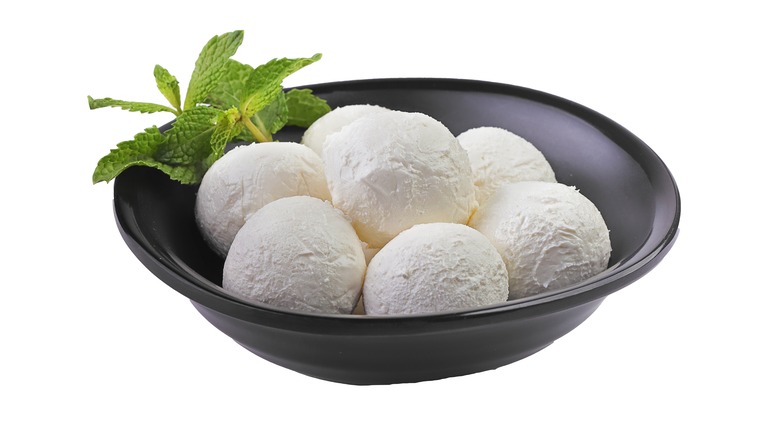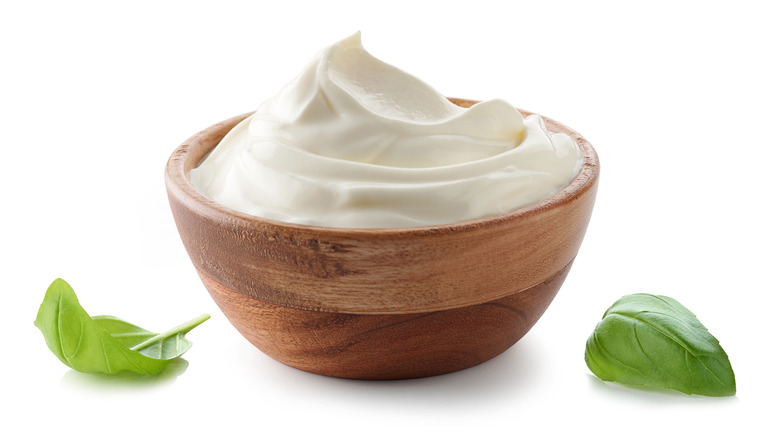Labneh Vs. Greek Yogurt: What's The Difference?
If you're a fan of creamy dips and spreads, then you're probably no stranger to the deliciousness of labneh and Greek yogurt. These two popular dairy products are often used in Middle Eastern and Mediterranean cuisine, and both are perfect for adding a bit of tang to your dishes.
But what makes Greek yogurt "Greek," anyways? Well, Positively Probiotic notes that there are records of yogurt in Greece that date back to the 5th century B.C.E. Surprisingly, Greek yogurt, which is strained yogurt, was given its name by an American corporation for the sake of advertising. And it worked: People hopping aboard the Mediterranean diet train were enticed by its name and its touted health benefits.
But what about labneh, its thicker counterpart? Labneh is an ancient invention that hails from the Middle Eastern region known as the Fertile Crescent (via Delicious). Both labneh and Greek yogurt are associated with Mediterranean cuisine, but the two actually have a few key differences that set them apart. Let's take a closer look at these two dairy products and see how they compare.
What is labneh?
First, let's start with labneh. Is it yogurt or cheese? Well, you could call it a yogurt cheese. This soft cheese is made by straining yogurt to remove the excess liquid or whey, which gives it a thicker consistency than Greek yogurt, per Nish Nush. Whey is a byproduct of cheese making and it is one of the two proteins found in dairy products. When milk curdles into cheese curds, the liquid leftover is whey, according to MasterClass. Labneh is thus a more concentrated yogurt, with as much whey removed as possible through straining.
This simple cheese was invented some 2 millennia ago in the Levant region, according to Delicious. Labneh is often flavored with herbs and spices and served as a dip or spread. It has a slightly sour taste and a firm yet spreadable texture that's perfect for scooping up with veggies or pita bread. Most liken its texture to cream cheese, which makes sense considering it's a yogurt that has been fully strained of liquid whey.
Greek yogurt
Greek yogurt is also a form of strained yogurt. In comparison to regular yogurt, Greek yogurt is much thicker and creamier (via Greatist). Although its name was part of a marketing strategy, the thick yogurt does have its origins in Greece, since Greeks have their own strained yogurt that they call straggisto, per Positively Probiotic. Labneh is what you get when you strain an already strained yogurt, removing much more liquid whey than you would to make Greek yogurt. So while Greek yogurt is strained yogurt, labneh is doubly strained yogurt! Greek yogurt is often enjoyed on its own for breakfast, but it can also be used as a substitute for sour cream or mayonnaise in dips and sauces.
The only real difference is in their acid whey content, with Greek yogurt having much more whey than labneh. Greek yogurt's acid whey content gives it a silkier texture than labneh. But the real question is, which one is better? Well, that all depends on what you're making. If you're looking for a protein-packed dressing with herbal notes, then labneh is the way to go. But if you want a smooth, spoonable breakfast, then Greek yogurt is the choice for you.


